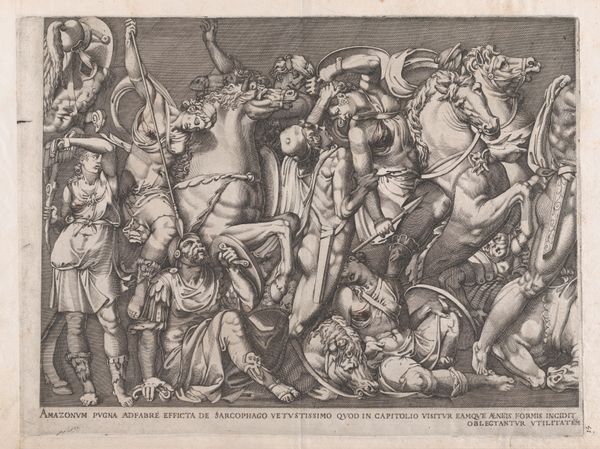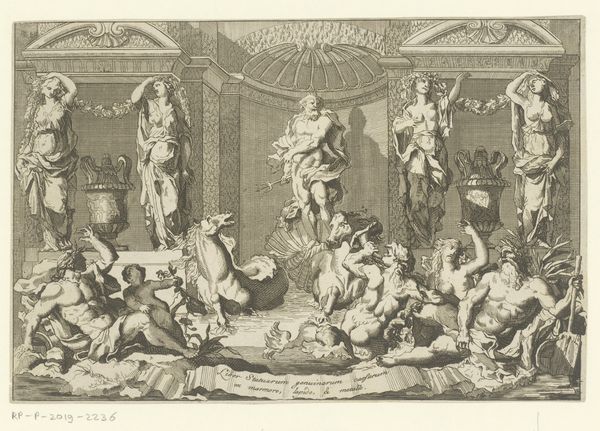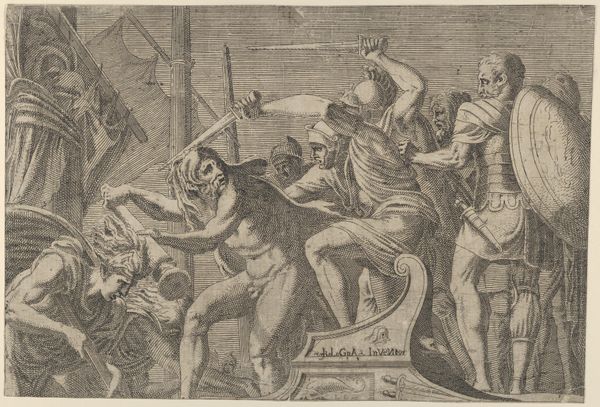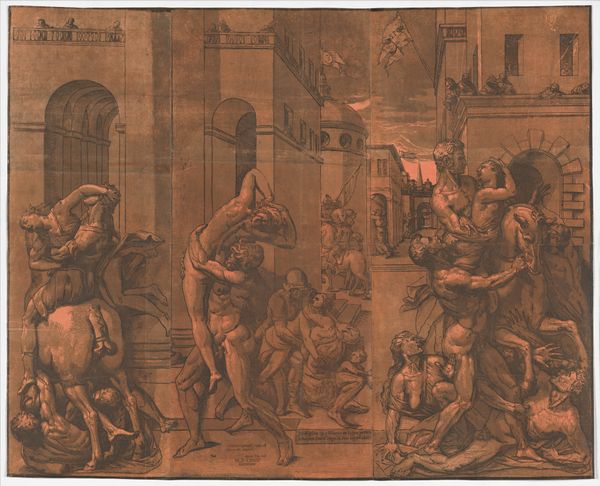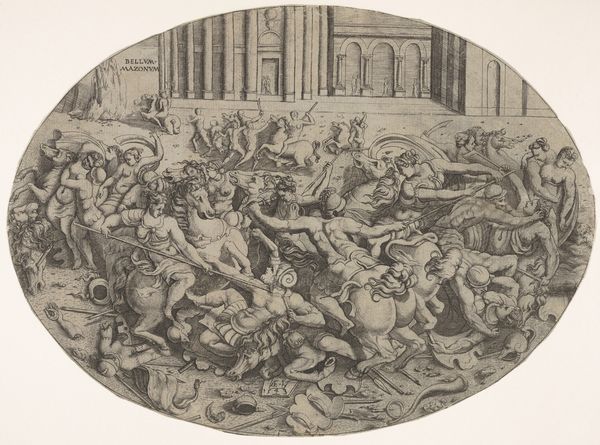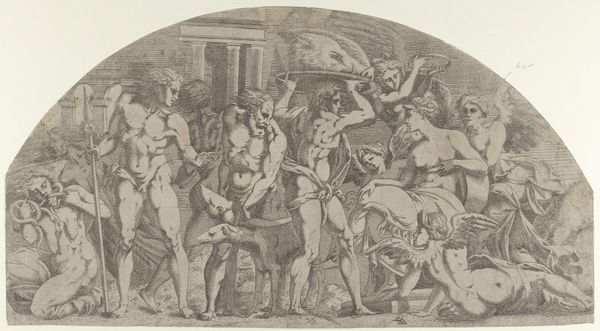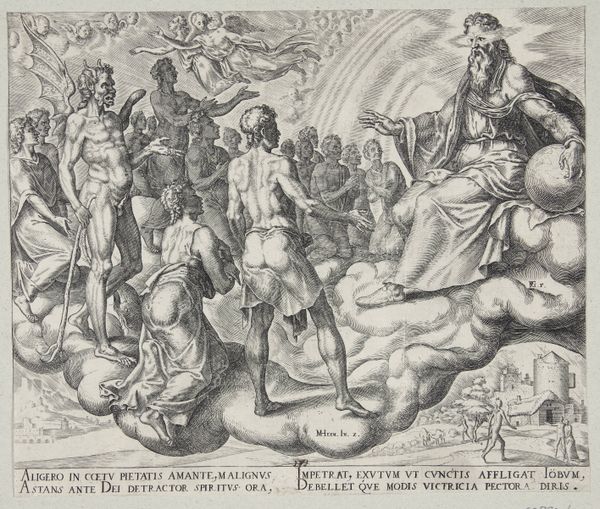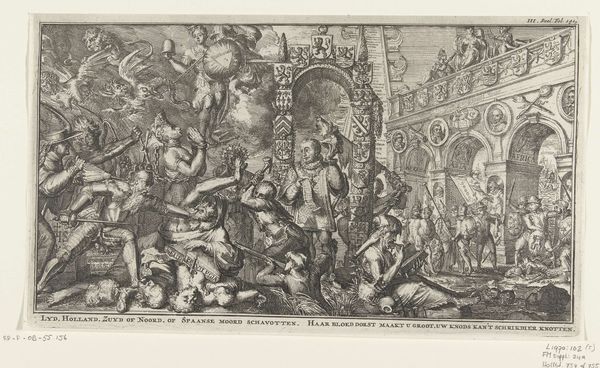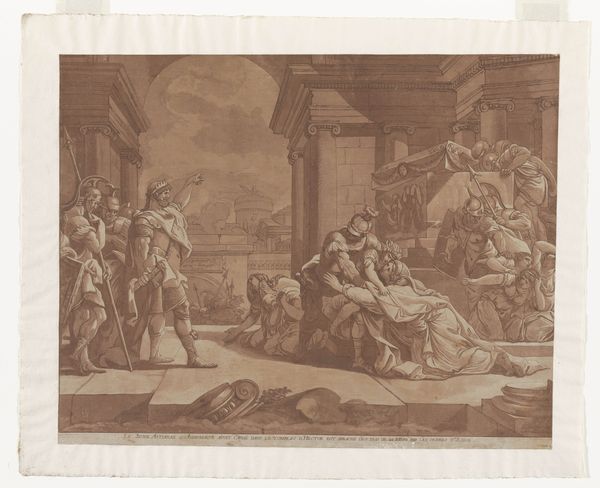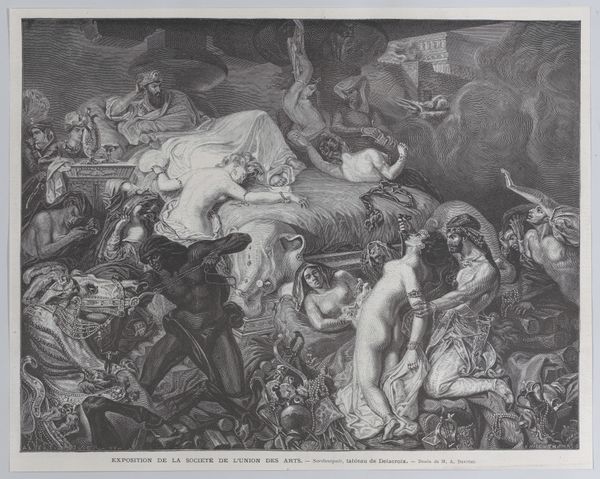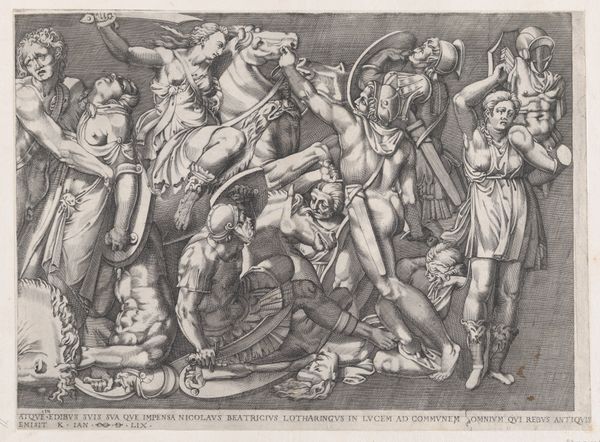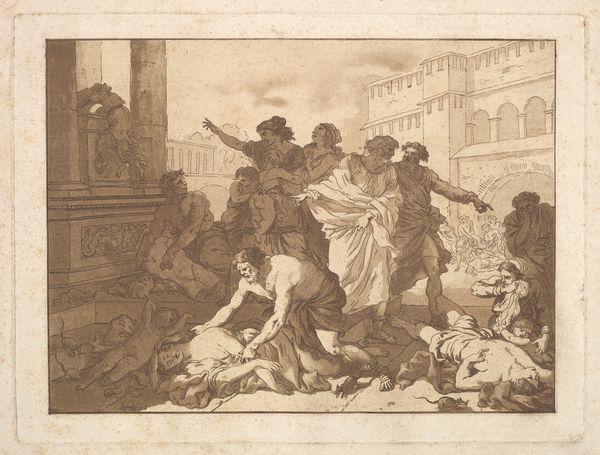
The Massacre of the Innocents, from Opera Selectiora 1739
0:00
0:00
drawing, print, paper, engraving
#
drawing
#
narrative-art
#
baroque
# print
#
figuration
#
paper
#
history-painting
#
engraving
Dimensions: 405 × 542 mm (image/block); 426 × 586 mm (sheet)
Copyright: Public Domain
Curator: At first glance, this evokes chaos and brutality; a swirling mass rendered in sepia tones. Editor: Indeed. What we're viewing is John Baptist Jackson's "The Massacre of the Innocents, from Opera Selectiora," an engraving from 1739. It depicts a truly horrifying biblical episode. Curator: It is striking how he’s structured the composition. The foreground is densely packed with bodies, violence. Then the scene almost replicates itself further in the distance, but smaller and slightly hazy like a half-formed nightmare. Editor: The repetition emphasizes the scale of the tragedy. Jackson was clearly playing with visual depth and the emotional impact through composition. The print, produced on paper, exemplifies the Baroque style’s dramatic flair. These images served a critical function then; circulating moral tales throughout Europe’s artistic networks. Curator: Look how each figure has been crafted, there’s the exaggerated musculature and theatrical poses. The artist focuses intently on texture—folds in clothing, contorted faces. It's very performative and yet disturbing. Editor: Right, it pulls on very specific emotional threads related to power, suffering, and faith. It speaks to how political power intersects violently with the most intimate aspects of human life. This piece comes at a time of immense social inequality—do you see resonances? Curator: Absolutely, and in its dissemination it challenges viewers to confront the morality of these hierarchical structures. And beyond all this historical weight, I keep getting pulled in by Jackson's deployment of form and light here. It keeps the eye darting all around, creating tension in the viewing experience. Editor: I think examining the work in its artistic and political context underscores that formal ingenuity. Curator: Perhaps so. It makes a strong case for both of our approaches, don’t you think? Editor: Definitely. Looking at it now, I appreciate Jackson's mastery of conveying chaos within such a structured format even more.
Comments
No comments
Be the first to comment and join the conversation on the ultimate creative platform.
